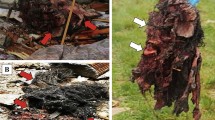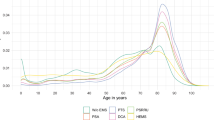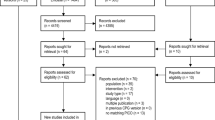Abstract
Background
We conducted a comprehensive analysis of the epidemiology of trauma deaths in our urban county during a one-year period a decade ago. In the interim we have implemented a statewide trauma system, initiated a number of injury-prevention programs, and have had a major public effort to reduce drug traffic and related gangs. Consequently, we have reassessed the regional trauma mortality to ascertain the impact of these measures and to search for new injury patterns.
Methods
Trauma deaths occurring within our urban county from January 1 through December 31, 2002 were reviewed for mechanism, demographics, and cause of fatal injury; cases were identified using death certificates from the Colorado Department of Public Health. We compared these data to the trauma fatalities occurring during 1992.
Results
During the 2002 study period, there were 420 injury-related deaths. Most of the patients were men (296 patients, 70%), with a mean age of 47.3 years (median age, 42 years). The three predominant mechanisms of fatal injury were transport-related (180 patients, 43%), intentional (99 patients, 24%), and falls (86 patients, 20%). Comparison between 1992 and 2002 showed significant increases in the percentage of transport-related and fall-related deaths, and a significant reduction in intentional fatal injuries. There was also a shift in the percentage of deaths occurring in the first 24 h to delayed times. The death rate per capita in Denver County declined from 0.081 in 1992 to 0.060 in 2002.
Conclusions
Along with a decrease in the per capita death rate, the major mechanisms of patient’s deaths changed substantively over the decade 1992–2002; there was a shift from intentional injuries to transport-related deaths as the predominant etiology of trauma related deaths. Recognition of such injury patterns will direct future injury-prevention efforts and coordination of citywide trauma care.
Similar content being viewed by others
References
Demetriades D, Murray J, Charalambides K, et al. (2004) Trauma fatalities: time and location of hospital deaths. J Am Coll Surg 198:20–26
Stewart RM, Myers JG, Dent DL, et al. (2003) Seven hundred fifty-three consecutive deaths in a level I trauma center: the argument for injury prevention. J Trauma 54:66–70; discussion 70–71
Baker CC, Oppenheimer L, Stephens B, et al. (1980) Epidemiology of trauma deaths. Am J Surg 140:144–150
Trunkey DD, Lim RC Jr. (1974) Analysis of 425 consecutive trauma fatalities: an autopsy study. J Am Coll Emerg Phys 3:368–371
Sauaia A, Moore FA, Moore EE, et al. (1995) Epidemiology of trauma deaths: a reassessment. J Trauma 38:185–193
Neuman TS, Bockman MA, Moody P, et al. (1982) An autopsy study of traumatic deaths; San Diego County, 1979. Am J Surg 144:722–727
Clark DE, Hahn DR (1999) Hospital trauma registries linked with population-based data. J Trauma 47:448–454
Shackford SR, Mackersie RC, Davis JW, et al. (1989) Epidemiology and pathology of traumatic deaths occurring at a level I trauma center in a regionalized system: the importance of secondary brain injury. J Trauma 29:1392–1397
Biffl WL, Moore EE, Offner PJ, et al. (2002) The Outreach Trauma Program: a model for survival of the academic trauma center. J Trauma 52:840–846
Powell DW, Moore EE, Cothren CC, et al. (2004) Is emergency department resuscitative thoracotomy futile care for the critically injured patient requiring prehospital cardiopulmonary resuscitation? J Am Coll Surg 199:211–215
Pickens JJ, Copass MK, Bulger EM (2005) Trauma patients receiving CPR: predictors of survival. J Trauma 58:951–958
Potenza BM, Hoyt DB, Coimbra R, et al. (2004) The epidemiology of serious and fatal injury in San Diego County over an 11-year period. J Trauma 56:68–75
Author information
Authors and Affiliations
Corresponding author
Rights and permissions
About this article
Cite this article
Cothren, C.C., Moore, E.E., Hedegaard, H.B. et al. Epidemiology of Urban Trauma Deaths: A Comprehensive Reassessment 10 Years Later. World J Surg 31, 1507–1511 (2007). https://doi.org/10.1007/s00268-007-9087-2
Received:
Revised:
Accepted:
Published:
Issue Date:
DOI: https://doi.org/10.1007/s00268-007-9087-2




